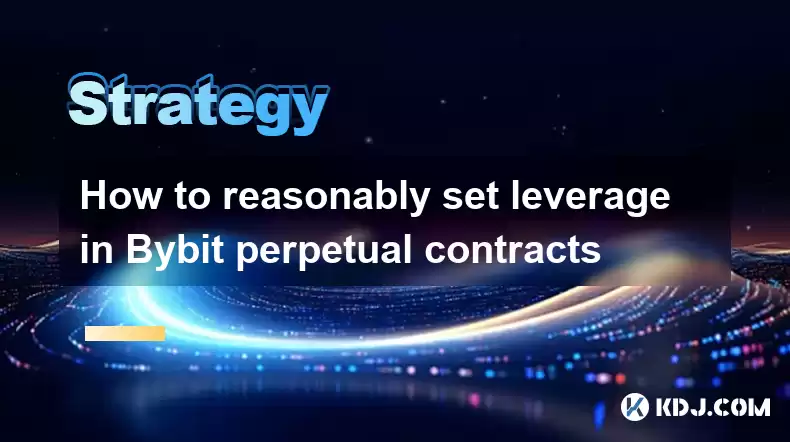-
 Bitcoin
Bitcoin $115000
0.12% -
 Ethereum
Ethereum $3701
4.50% -
 XRP
XRP $3.081
2.99% -
 Tether USDt
Tether USDt $0.0000
-0.01% -
 BNB
BNB $767.9
1.45% -
 Solana
Solana $169.5
3.13% -
 USDC
USDC $0.9999
0.01% -
 Dogecoin
Dogecoin $0.2106
4.30% -
 TRON
TRON $0.3334
1.62% -
 Cardano
Cardano $0.7564
2.54% -
 Stellar
Stellar $0.4165
0.76% -
 Hyperliquid
Hyperliquid $38.75
0.25% -
 Sui
Sui $3.593
3.00% -
 Chainlink
Chainlink $17.08
3.59% -
 Bitcoin Cash
Bitcoin Cash $573.6
4.35% -
 Hedera
Hedera $0.2508
-0.84% -
 Avalanche
Avalanche $23.07
6.46% -
 Ethena USDe
Ethena USDe $1.001
-0.02% -
 Litecoin
Litecoin $120.8
8.17% -
 UNUS SED LEO
UNUS SED LEO $8.943
-0.32% -
 Toncoin
Toncoin $3.400
-5.60% -
 Shiba Inu
Shiba Inu $0.00001255
1.54% -
 Uniswap
Uniswap $9.908
6.32% -
 Polkadot
Polkadot $3.718
2.10% -
 Monero
Monero $303.0
-0.74% -
 Dai
Dai $0.9999
-0.02% -
 Bitget Token
Bitget Token $4.392
0.91% -
 Cronos
Cronos $0.1403
6.31% -
 Pepe
Pepe $0.00001076
1.13% -
 Aave
Aave $267.2
1.80%
How to reasonably set leverage in Bybit perpetual contracts
Leverage in Bybit perpetual contracts can amplify profits and losses; setting it wisely involves assessing risk tolerance, market conditions, and trading strategy.
Apr 04, 2025 at 06:42 am

Leverage in Bybit perpetual contracts can significantly impact your trading outcomes. Setting the right leverage is crucial for managing risk and maximizing potential returns. Bybit offers leverage up to 100x, which can be both a powerful tool and a double-edged sword. Understanding how to set leverage reasonably involves assessing your risk tolerance, market conditions, and trading strategy. This article will guide you through the process of setting leverage in Bybit perpetual contracts, helping you make informed decisions to enhance your trading experience.
Understanding Leverage in Bybit Perpetual Contracts
Leverage allows traders to control a larger position with a smaller amount of capital. In Bybit perpetual contracts, leverage can range from 1x to 100x. When you use leverage, you borrow funds from the exchange to increase your trading position. For example, with 10x leverage, you can control a position worth $10,000 with just $1,000 of your own capital. However, while leverage can amplify profits, it also increases the potential for significant losses. Therefore, setting leverage reasonably is essential to manage risk effectively.
Assessing Your Risk Tolerance
Before setting leverage, it's crucial to assess your risk tolerance. Risk tolerance varies from one trader to another and depends on factors such as financial situation, trading experience, and emotional resilience. If you are new to trading or have a low risk tolerance, it's advisable to start with lower leverage, such as 5x or 10x. More experienced traders with a higher risk tolerance might opt for higher leverage, but they should still be cautious. Understanding your risk tolerance helps you set leverage that aligns with your comfort level and financial goals.
Evaluating Market Conditions
Market conditions play a significant role in determining the appropriate leverage. Volatile markets can lead to rapid price movements, increasing the risk of liquidation. In such conditions, it's wise to use lower leverage to protect your position. Conversely, in stable markets with less volatility, you might consider using higher leverage to maximize potential returns. Always keep an eye on market trends, news, and indicators to adjust your leverage accordingly. By staying informed about market conditions, you can make more strategic decisions about your leverage settings.
Choosing the Right Trading Strategy
Your trading strategy should also influence your leverage settings. Different strategies require different levels of leverage. For instance, scalping, which involves making quick trades to profit from small price movements, often uses higher leverage to capitalize on these small gains. On the other hand, swing trading, which involves holding positions for longer periods, might benefit from lower leverage to reduce the risk of liquidation during market fluctuations. Consider your trading style and objectives when setting leverage to ensure it aligns with your strategy.
Setting Leverage in Bybit
Setting leverage in Bybit is a straightforward process. Here's how you can do it:
- Log into your Bybit account and navigate to the perpetual contracts section.
- Select the trading pair you want to trade.
- Click on the leverage button next to the trading pair.
- Choose your desired leverage from the available options, ranging from 1x to 100x.
- Confirm your selection to apply the chosen leverage to your trading position.
Remember, you can adjust your leverage at any time during trading, allowing you to adapt to changing market conditions and trading strategies.
Managing Risk with Stop-Loss Orders
Using stop-loss orders is an effective way to manage risk when trading with leverage. A stop-loss order automatically closes your position when the price reaches a predetermined level, helping to limit potential losses. When setting leverage, consider the impact of potential price movements on your position and set your stop-loss accordingly. For example, if you're using 20x leverage, a small price movement can significantly affect your position, so you might want to set a tighter stop-loss to protect your capital.
Monitoring Your Position
Monitoring your position is crucial when trading with leverage. Bybit provides real-time data and tools to help you keep track of your trades. Regularly check your position's performance, margin levels, and potential liquidation prices. If the market moves against your position, you may need to adjust your leverage or add more margin to avoid liquidation. Staying vigilant and proactive in managing your position can help you navigate the challenges of trading with leverage.
Diversifying Your Portfolio
Diversification is another key strategy for managing risk when using leverage. Instead of putting all your capital into a single trading position, consider spreading it across multiple assets or trading pairs. This approach can help mitigate the impact of a single trade going against you. By diversifying your portfolio, you can reduce the overall risk associated with high leverage trading and increase your chances of achieving consistent returns.
Learning from Experience
Finally, learning from your trading experience is essential for setting leverage reasonably. Keep a trading journal to record your trades, including the leverage used, the outcomes, and any lessons learned. Over time, you'll gain insights into how different leverage levels affect your trading performance. Use this knowledge to refine your leverage settings and improve your overall trading strategy. Continuous learning and adaptation are key to mastering the use of leverage in Bybit perpetual contracts.
Common Questions About Setting Leverage in Bybit Perpetual Contracts
Q: What is the maximum leverage available in Bybit perpetual contracts?
A: The maximum leverage available in Bybit perpetual contracts is 100x. This allows traders to control a position worth 100 times their initial margin.
Q: How does leverage affect my potential profits and losses?
A: Leverage amplifies both potential profits and losses. For example, with 10x leverage, a 1% price movement in your favor can result in a 10% profit on your initial margin. However, a 1% price movement against you can lead to a 10% loss.
Q: Can I change my leverage during a trade?
A: Yes, you can adjust your leverage at any time during a trade. Bybit allows you to modify your leverage settings to adapt to changing market conditions and trading strategies.
Q: What should I consider when setting leverage?
A: When setting leverage, consider your risk tolerance, market conditions, trading strategy, and the use of risk management tools like stop-loss orders. These factors will help you determine the most suitable leverage for your trading needs.
Q: How can I avoid liquidation when using high leverage?
A: To avoid liquidation when using high leverage, monitor your position closely, use stop-loss orders, and be prepared to add more margin if necessary. Additionally, consider using lower leverage in volatile markets to reduce the risk of liquidation.
Disclaimer:info@kdj.com
The information provided is not trading advice. kdj.com does not assume any responsibility for any investments made based on the information provided in this article. Cryptocurrencies are highly volatile and it is highly recommended that you invest with caution after thorough research!
If you believe that the content used on this website infringes your copyright, please contact us immediately (info@kdj.com) and we will delete it promptly.
- Velo Universe, DEX, and DeFi Security: Navigating the Future of Decentralized Trading
- 2025-08-05 09:25:13
- Bitget Wallet Revolutionizes Solana with Gas-Free Transactions: A New Era for DeFi
- 2025-08-05 09:25:13
- Ozak AI, Crypto Boom, and ROI Potential: Is This the Next Big Thing?
- 2025-08-05 09:25:24
- Solana's ETF Hopes & the All-Time High Chase: Is SOL Set to Soar?
- 2025-08-05 09:25:24
- Coinbase's Brian Armstrong and the Art of Focused Work: A Deep Dive
- 2025-08-05 09:25:30
- Uniswap Price Prediction: Bullish Reversal on the Horizon?
- 2025-08-05 09:25:30
Related knowledge

How to avoid common crypto investment mistakes?
Jul 13,2025 at 01:35am
Understanding the Risks of Crypto InvestmentInvesting in cryptocurrency can be highly rewarding, but it also comes with significant risks. One of the ...

What is a long-short crypto strategy?
Jul 15,2025 at 10:56am
Understanding the Basics of a Long-Short Crypto StrategyA long-short crypto strategy is an investment approach where traders simultaneously take long ...

What is a long-short crypto strategy?
Jul 11,2025 at 01:28pm
Understanding the Basics of Long-Short Crypto StrategyA long-short crypto strategy is an investment approach where traders take both long and short po...

How to use the RSI indicator for crypto?
Jul 12,2025 at 03:56pm
Understanding the RSI Indicator in Cryptocurrency TradingThe Relative Strength Index (RSI) is a momentum oscillator used to measure the speed and chan...

Is copy trading a good strategy for crypto beginners?
Jul 12,2025 at 08:28am
Understanding Copy Trading in the Cryptocurrency MarketCopy trading is a strategy where novice traders replicate the trades of experienced investors a...

How to build a crypto portfolio with $1000?
Jul 13,2025 at 08:14pm
Understanding the Basics of Cryptocurrency InvestmentBuilding a crypto portfolio with $1000 starts with understanding the fundamentals of cryptocurren...

How to avoid common crypto investment mistakes?
Jul 13,2025 at 01:35am
Understanding the Risks of Crypto InvestmentInvesting in cryptocurrency can be highly rewarding, but it also comes with significant risks. One of the ...

What is a long-short crypto strategy?
Jul 15,2025 at 10:56am
Understanding the Basics of a Long-Short Crypto StrategyA long-short crypto strategy is an investment approach where traders simultaneously take long ...

What is a long-short crypto strategy?
Jul 11,2025 at 01:28pm
Understanding the Basics of Long-Short Crypto StrategyA long-short crypto strategy is an investment approach where traders take both long and short po...

How to use the RSI indicator for crypto?
Jul 12,2025 at 03:56pm
Understanding the RSI Indicator in Cryptocurrency TradingThe Relative Strength Index (RSI) is a momentum oscillator used to measure the speed and chan...

Is copy trading a good strategy for crypto beginners?
Jul 12,2025 at 08:28am
Understanding Copy Trading in the Cryptocurrency MarketCopy trading is a strategy where novice traders replicate the trades of experienced investors a...

How to build a crypto portfolio with $1000?
Jul 13,2025 at 08:14pm
Understanding the Basics of Cryptocurrency InvestmentBuilding a crypto portfolio with $1000 starts with understanding the fundamentals of cryptocurren...
See all articles

























































































